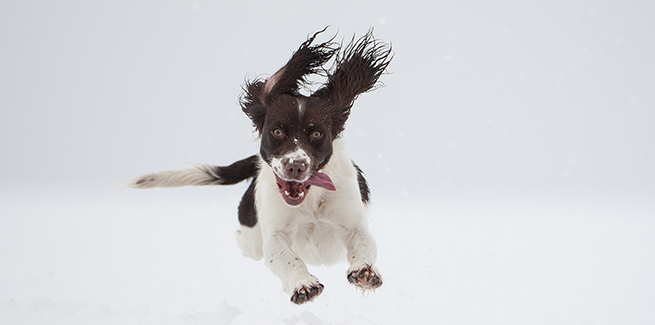“I think my dog has ADHD.”

You’ve heard it a million times from owners of excitable dogs—along with plenty of jokes about squirrels and such—but new research out of Finland indicates that there might be some truth in it.
In humans, symptoms of attention deficit hyperactivity disorder (ADHD) include trouble paying attention, impulsivity, hyperactivity, and excitability.
Sound like any patients you know? Except in dogs, it’s usually called hyperkinesis.
Lead researcher Hannes Lohi, PhD, a professor of veterinary biosciences at the University of Helsinki (UH), and his team based their study on data collected on more than 11,000 Finnish dogs through an extensive, online owner survey. Using questions borrowed from human ADHD research, the researchers examined hyperactivity, impulsivity, and inattention in dogs to identify environmental factors underlying canine ADHD-like behavior, as well as potential links to other behavioral traits.
The questions focused on seven canine behavioral traits: fear, aggressiveness, noise sensitivity, fear of surfaces and heights, hyperactivity/impulsivity and inattention, separation-related behavior, and compulsive behavior.
Additional questions identified demographic and environmental factors.
The researchers found that a number of behavioral, demographic, and environmental variables were associated with canine hyperactivity/impulsivity including:
- Age and sex
- Breed
- Body size
- Daily exercise
- Daily time spent alone
- Owner’s prior experience with other dogs
- Compulsive behavior
- Aggressiveness and fearfulness
In terms of age and gender, hyperactivity, impulsivity, and inattention were common in young dogs and male dogs—no surprise to anyone familiar with ADHD in humans, in which it tends to be most common in young boys.
Dogs who spent more time alone at home during the day were more hyperactive, impulsive, and inattentive than dogs who spent less time on their own.
The researchers also discovered a new link between the owner’s experience with dogs and displays of hyperactivity and impulsivity in their dogs: Both traits were more common in dogs who were not their owners’ first dogs.
The reason for this is unclear, although researcher Sini Sulkama, a doctoral candidate at UH, has a theory: People might choose less-active animals as their first dog because they think pet dogs are supposed to be calmer, “Whereas more active and challenging dogs can be chosen after [they gain] more experience with dogs.”
But selective breeding for specific traits has, perhaps, had the biggest effect on the behavior of different dog breeds.
Breeds that scored highest in hyperactivity/impulsivity were cairn terrier, Jack Russell terrier, German shepherd, and Staffordshire bull terrier. The breeds with the lowest scores were Chinese crested dog, rough collie, and Chihuahua.
In terms of inattention, breeds with the highest scores were the cairn terrier, golden retriever, and Finnish Lapponian dog. The breeds with lowest scores were the Spanish water dog, miniature poodle, and border collie
Body size was another factor: medium-sized dogs had higher hyperactivity/impulsivity scores than small dogs.
The authors found that certain breeds are more likely to display ADHD-like characteristics, but that often comes down to genetics and many of these breeds have been bred to display these traits over many generations.
”Hyperactivity and impulsivity on the one hand, and good concentration on the other, are common in breeds bred for work, such as the German shepherd and border collie,” said Lohi. “In contrast, a more calm disposition is considered a benefit in breeds that are popular as pets or show dogs, such as the Chihuahua, long-haired collie, and poodle, making them easier companions in everyday life.
Lohi added that the ability to concentrate isn’t considered as important a trait in nonworking breeds, “which is why inattention can be more common among pet dogs.”
Although you'll often find it in working journalists, too—Hey! A squirrel!!
Photo credit: © Robjem/iStock/Getty Images Plus via Getty Images



